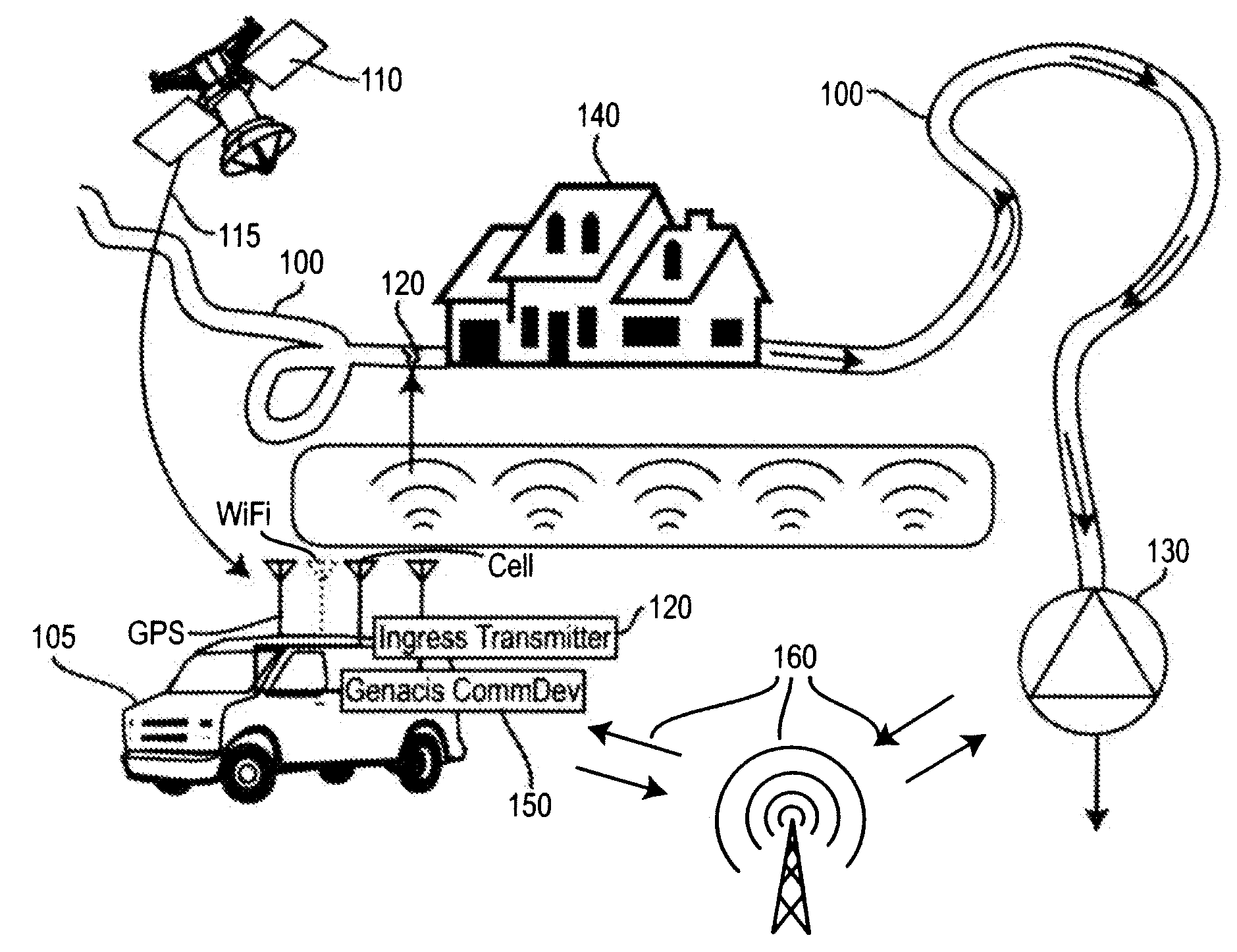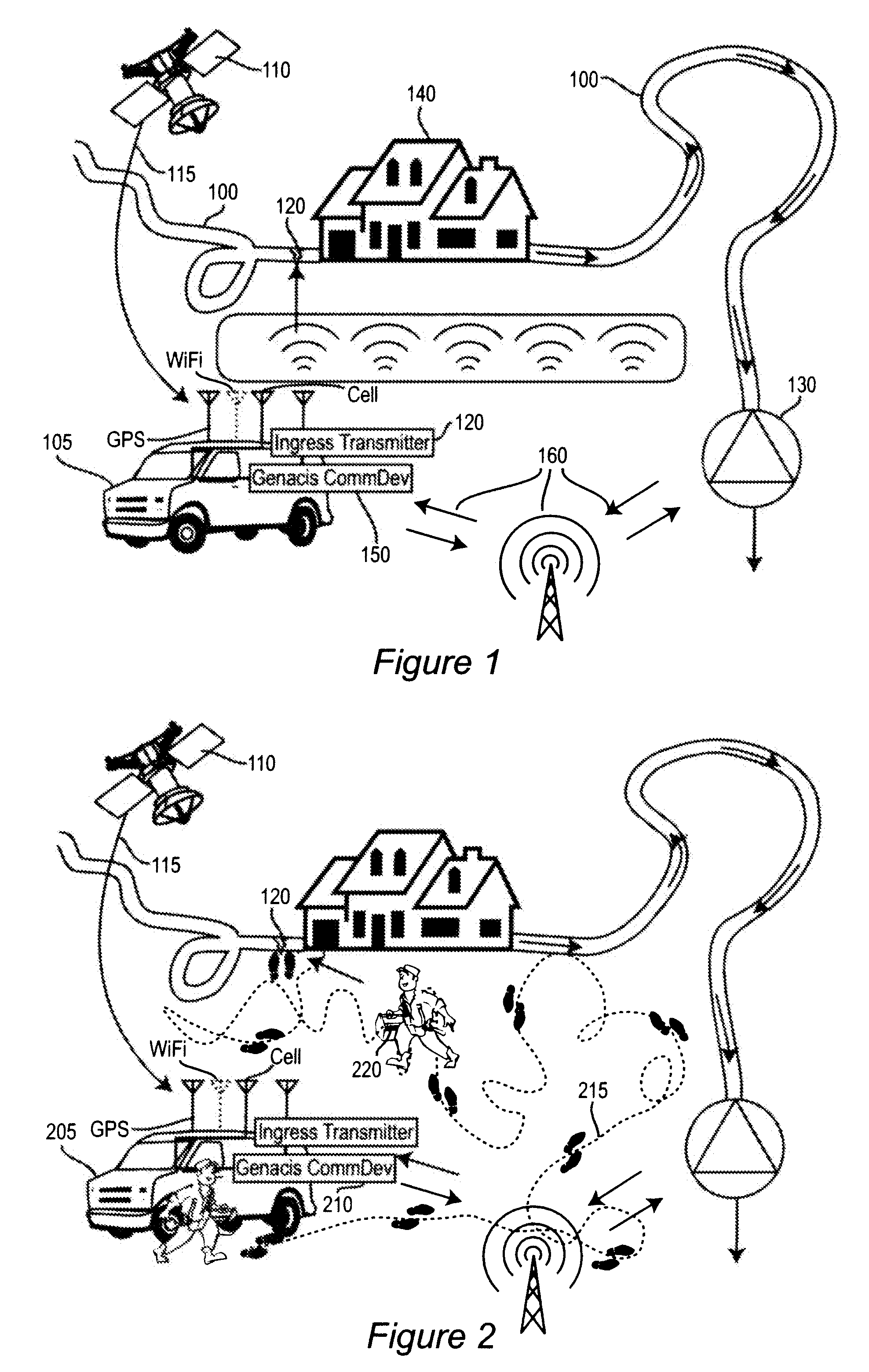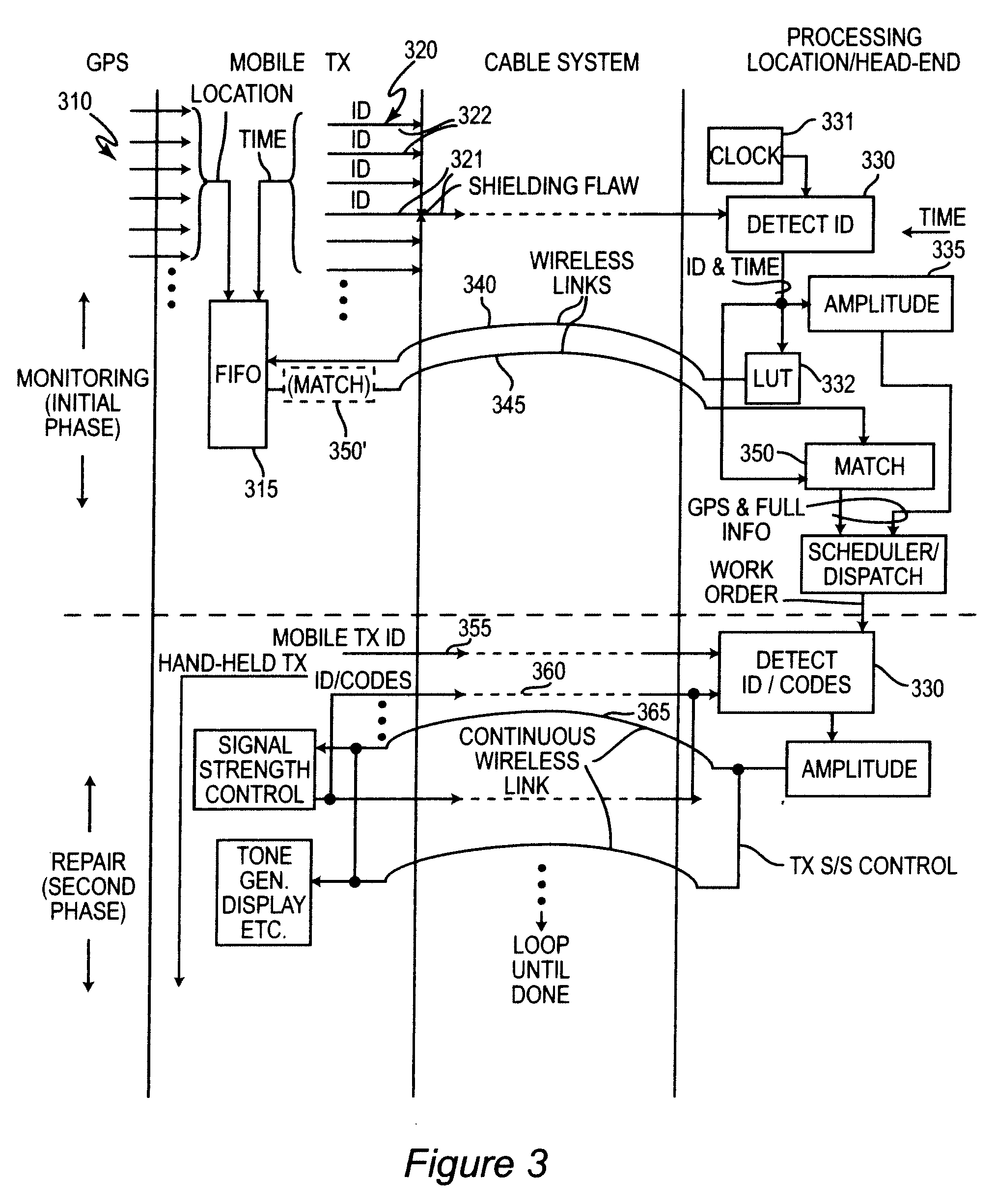Communication System Fault Location Using Signal Ingress Detection
a technology of communication system and fault location, applied in the field of communication system condition monitoring and maintenance, can solve problems such as increased noise, difficult detection of egress signals, and damage to lasers
- Summary
- Abstract
- Description
- Claims
- Application Information
AI Technical Summary
Benefits of technology
Problems solved by technology
Method used
Image
Examples
Embodiment Construction
[0017]Referring now to the drawings, and more particularly to FIGS. 1 and 2, there is shown a graphical depiction of a detection or monitoring phase and a location and repair phase, respectively, of a method of detecting and remediating shielding flaws in a cable communication system, respectively. More specifically, in FIGS. 1 and 2, a representative portion of a cable communication system and its environment is illustrated including resources included in carrying out the method. Communication links are illustrated generally and schematically in FIGS. 1 and 2 but are illustrated in greater detail in FIG. 3.
[0018]While some particular elements of the cable communication system 100 and the individual resources employed in the method are known (although preferred resources which will be described below in connection with FIGS. 4 and 5 are not), the method in accordance with the invention is represented in the juxtaposition of those elements and resources and thus no portion of either ...
PUM
 Login to View More
Login to View More Abstract
Description
Claims
Application Information
 Login to View More
Login to View More - R&D
- Intellectual Property
- Life Sciences
- Materials
- Tech Scout
- Unparalleled Data Quality
- Higher Quality Content
- 60% Fewer Hallucinations
Browse by: Latest US Patents, China's latest patents, Technical Efficacy Thesaurus, Application Domain, Technology Topic, Popular Technical Reports.
© 2025 PatSnap. All rights reserved.Legal|Privacy policy|Modern Slavery Act Transparency Statement|Sitemap|About US| Contact US: help@patsnap.com



